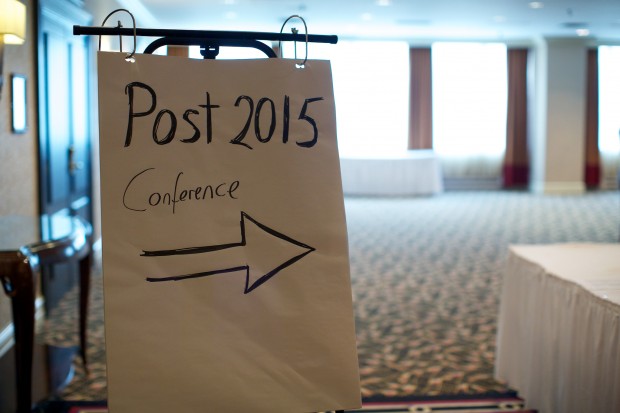Addressing horizontal inequalities as drivers of conflict in the post-2015 development agenda
Horizontal inequalities increase the risk of violent conflict, and violence and conflict can worsen inequalities. This paper analyzes how inequalities, violent conflicts and the relation between them, are holding back development, adding to the arguments for addressing them in the post-2015 framework.
For other contributions to the debate on the post-2015 development framework, please click here!
By Henk-Jan Brinkman, Larry Attree and Saša Hezir
Addressing inequalities is important – not only for economic growth, development and Millennium Development Goal (MDG) achievement – but also from a peace and security perspective. Horizontal inequalities increases the risk of violent conflict, and violence and conflict can worsen inequalities. This paper analyzes how inequalities, violent conflicts and the relation between them, are holding back development, adding to the arguments for addressing them in the post-2015 framework.
The paper reviews evidence that various inequalities – economic, political, cultural, gender and those related to security, justice and social services – can heighten group grievances and lead to conflict in diverse contexts around the world. For example, access to social services has fuelled inter-group hostility in Kosovo; gender inequality has perpetuated violence against women in Melanesia; political exclusion has underpinned destabilizing protests and violence in Yemen; and unequal security and justice provision has deepened conflict divides in many countries across Africa and South and Central Asia.
This evidence is strong enough for policy makers to take action on inequality – even though more research is needed on particular types of inequality, for example, those related to gender, security and justice. There needs to be a focus on strengthening the relations among groups to build confidence and mitigate the divisions that can lead to conflict, violence and underdevelopment. This can be achieved through addressing inequality through inclusion, fairness, responsiveness, accountability to all social groups, and measures to strengthen inter-group relations.
Based on the evidence and analysis presented in this paper, in the post-2015 development framework, policy options to address inequalities include the following:
- Equality can be recognized as one of the guiding principles underpinning the whole framework;
- One or more goals can specifically focus on inequality, for example by type of inequality (social equality, economic equality, political equality), similar to MDG3 on gender equality;
- Inequalities could be integrated as a concern into goals and targets on different sectoral/thematic issues (politics, security, justice, health, education, poverty), through language stressing inclusion, fairness, responsiveness and accountability to all social groups throughout the framework;
- Indicators can be better disaggregated by more categories to show attainment of development benefits by different groups within society, and an inequality measure could be added for each indicator; and
- Progress towards goals can be weighted to ensure that progress on inequality scores higher.
Henk-Jan Brinkman is chief of the Policy, Planning and Application Branch of the Peacebuilding Support Office in the United Nations. Larry Attree is a Conflict and Security Adviser at Saferworld, where he has worked since 2003. Saša Hezir is currently studying for her master’s degree in international affairs from Columbia University’s School of International and Public Affairs.
This paper was produced by Saferworld and the United Nations Peacebuilding Support Office to feed into the joint Civil Society/UN consultation Global Thematic Consultation on Addressing Inequalities in the post-2015 development framework. It is presented here with the permission of Saferworld




















“Las desigualdades, los conflictos violentos y la relación entre ellos están frenando el #desarrollo” http://t.co/8TOR5p7k0f @TransConflict
Addressing horizontal inequalities as drivers of conflict in the post-2015… http://t.co/lHVzEKsCCX #MDG2015 #peacebuilding
Addressing horizontal inequalities as drivers of #conflict in the post-2015 development agenda – #peace – http://t.co/nVtFuZbozf
Addressing horizontal inequalities as drivers of #conflict in the post-2015 development agenda – #peace – http://t.co/zznNxRQJhw
RT @TransConflict: Addressing horizontal inequalities as drivers of #conflict in the post-2015 development agenda – #peace – http://t.co …
RT @TransConflict: Addressing horizontal inequalities as drivers of conflict in the post-2015… http://t.co/lHVzEKsCCX #MDG2015 #peaceb …
RT @transconflict: Addressing horizontal inequalities as drivers of conflict in the post-2015… http://t.co/FE7iRN9nxT #MDG2015…
Addressing horizontal inequalities as drivers of #conflict in the post-2015 #development agenda http://t.co/MhkyrFt7WP
Pingback : Addressing horizontal inequalities as drivers o...